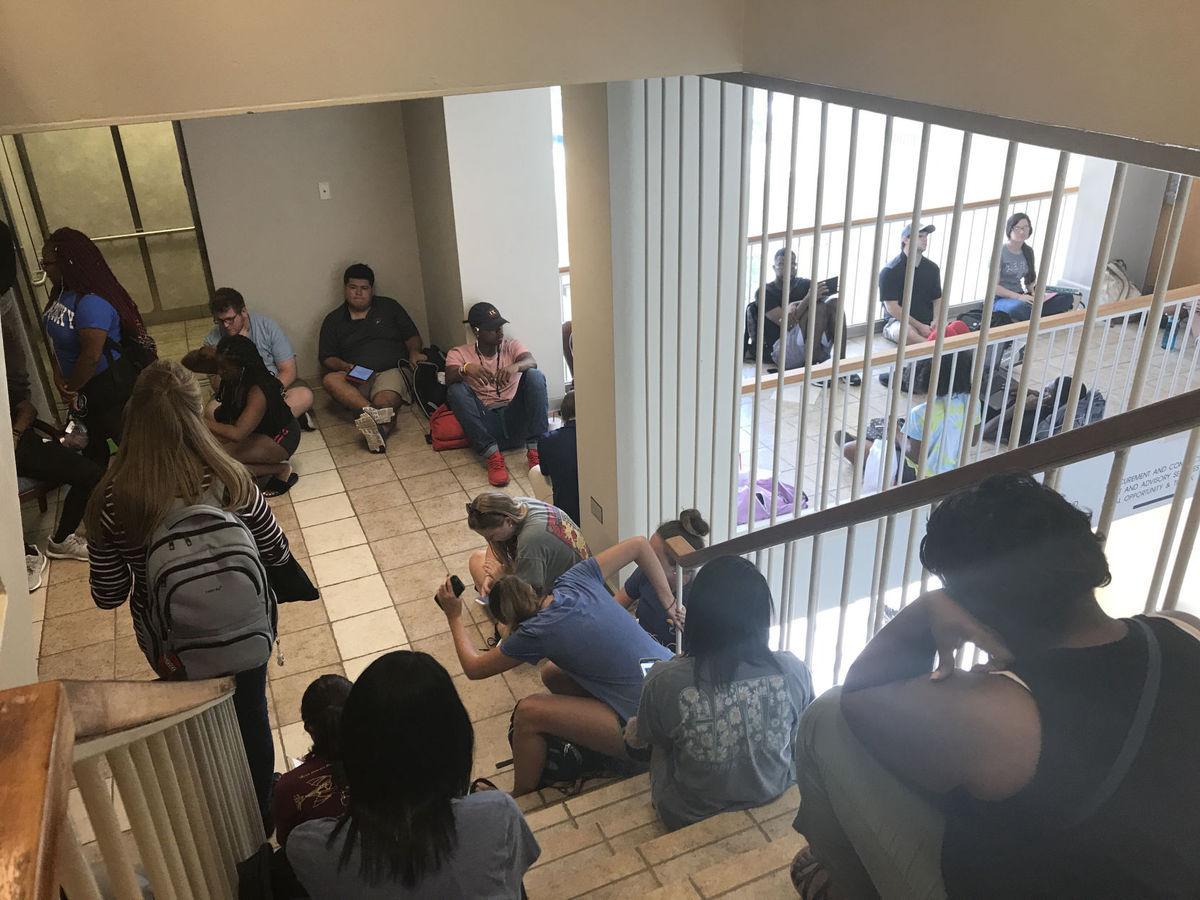Financial aid director: Long wait times mainly due to student errors
September 20, 2017
Financial Aid Director Tracey Mingo says the long lines at the Financial Aid Office on Tuesday, Sept. 5, were mainly due to student errors and that following guidelines would prevent longer wait times at the beginning of the year.
The George-Anne reported that hundreds of students were piled outside of the office; taking naps, ordering food and waiting to resolve their payment issues before the tuition deadline the next day.
Some students waited in line for more than four hours. Ethan McKibbin, senior business management major, was one of the students present that day and said the office does not have enough people to staff it.
Mingo said, however, that staffing issues aren’t the problem.
“The Financial Aid Office is adequately staffed according to national staffing models,” she said. “The issue is that whenever 1,000-2,000 students wait [until] the last minute to fill out their paperwork, there becomes a backlog.”
Since Aug. 1, 2017, the office has received more than 2,300 FAFSAs, even though the priority filing deadline was Feb. 1, and the 2017-18 FAFSA became available on Oct. 1, 2016.
Students also often report incorrect information on their FAFSAs according to Mingo. Counselors then have to investigate the discrepancies and make corrections which delays processing.
The U.S. Department of Education, which provides the FAFSA, authored a listicle last year reporting several errors students frequently make when filling out their applications, including listing incorrect social security numbers, names and tax data.
Another issue, Mingo said, is that verification documents, such as W2 forms and tax transcripts, are sometimes not uploaded to the correct folders in the student verification portal on WINGS, which can result in students having their documents rejected.
These rejections result in even more processing delays, as the office must wait until it receives the correct documents from students before the financial aid process can proceed.
Afterward, the correct documents must be compared with the information on a student’s FAFSA, assuming, of course, that its information has been reported correctly.
“The Financial Aid Office is required to resolve all discrepancies between the submitted verification documents and the FAFSA,” Mingo said. “Anytime both do not match, counselors have to ask questions to resolve the issues.”
Almost 1,500 students waited until after Aug. 1 to submit verification documents, according to Mingo, and more than 4,100 students were selected for the verification process, according to Amy Ballagh, Ph.D., vice president of student affairs, in a recent State of the University report.
The influx of late documents, Mingo said, along with the late submission of 2,300 FAFSAs, resulted in longer wait times due to students contacting the office all at once.
“If everyone filled out things according to what we put out as guidelines for completing the paperwork, there would not be these backlogs at the start of the school year,” Mingo said. “Students have almost an entire year prior to the start of the school year to submit.”
This 2018-19 FAFSA will be available Oct. 1 on the Federal Student Aid website. Students will be required to use their 2016 tax information.
The Financial Aid Office’s priority filing deadline for the FAFSA is Feb. 1, 2018, and the office strongly encourages students to submit all verification documents by early June.









